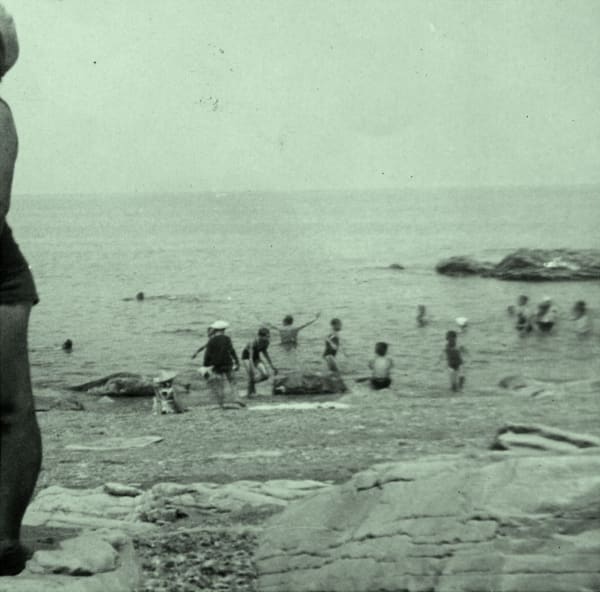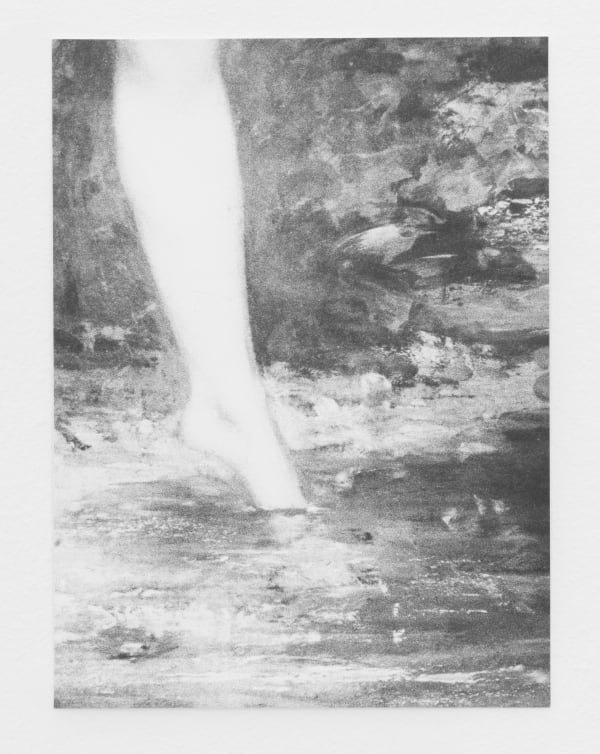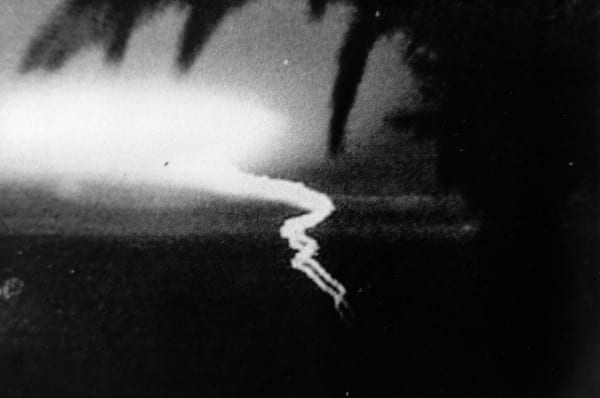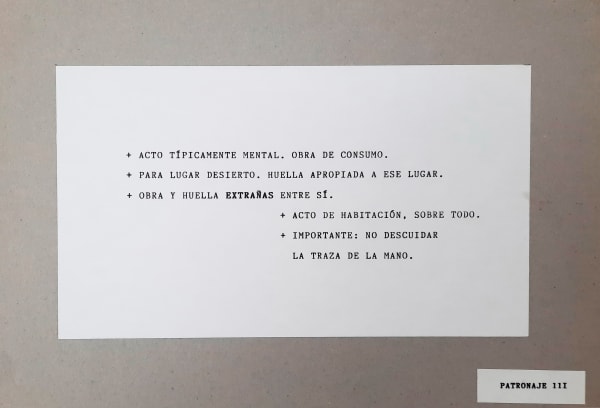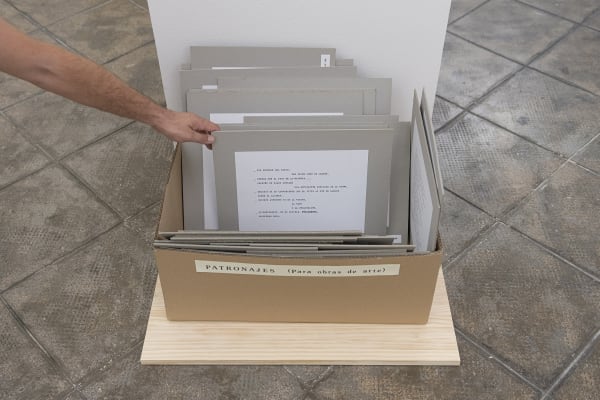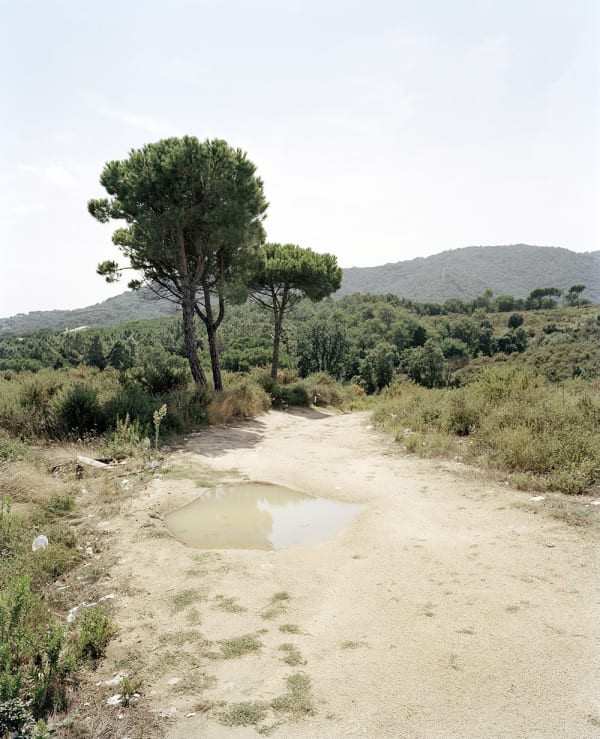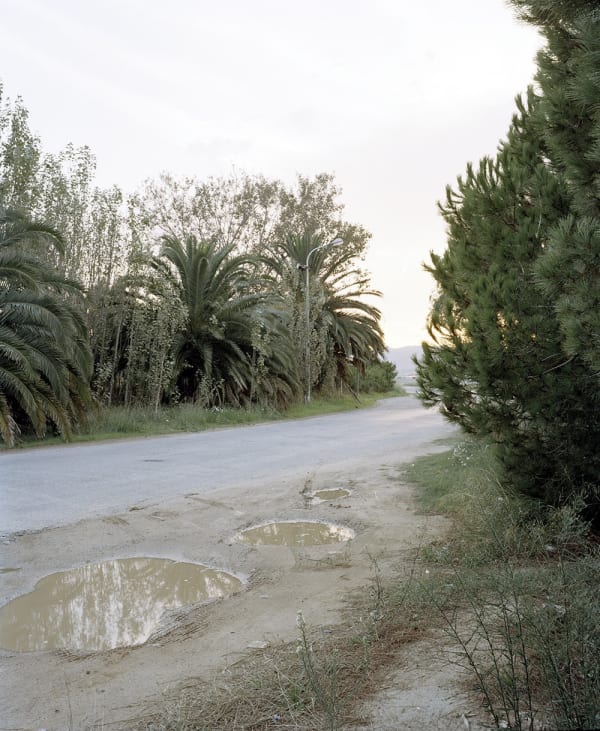-
The following selection of works has been put together based on the notion of “hidden images”. All the works presented reflect on how we look, but especially on how we overlook certain details. Hidden images that are revealed by looking at what is on the background, secondary. Images that are fragments cut-out from other pictures or that appear by placing two or more prints next to each other. Or images that are evoked by an absence. A small proposal on how to look at what is anodyne, invisible or imperceptible, playing with the limits of representation and imagination.
-
PETER PILLER
-
 PETER PILLER, BLICKE, 2016
PETER PILLER, BLICKE, 2016 -
Since the late 1990’s, Peter Piller (Fritzlar, Germany, 1968) has been dealing with one of the most defining traits of the so-called information-era: the impulse towards the creation and development of archives.
In Blicke and Bereitschaftsgrad projects, he plays with the dialogue between images from the same sources, specialized magazines in the military world. Piller shows us the relationship between the warlike and the sexual, between the rhetoric of masculine strength and the way of looking.
Repetition and variation are once again key factors in the experience of this artist’s works. If repetition functions here as an annihilator of narrative – that is, as the element that lets us know immediately that there is no story being told – variation is, on the other hand, the factor that allows us to concentrate on the slight differences these images carry with them – the minor details through which the ideological apparatus of a military prop magazine comes to show.
-
IÑAKI BONILLAS
-
Combining conceptual, personal and archival photographic approaches, Iñaki Bonillas investigates the materiality and semiotic depth of the medium. Bonillas addresses the cultural history of photography to highlight the medium’s structural behavior and its relationship to the creation of identity.
The project A Storm of Secondary Things is based on the idea of “secondariness”, the artist dived into the photographic archive that he inherited from his grandfather (a second hand material also), hunting for photos in which there was something interesting going on in the background that remained unnoticed by him before. People and objects that were not part of the main action, that belonged to a secondary landscape, a diffuse context from which the photographer was largely disengaged. But despite the fact that they weren’t paid any attention, they were certainly there, fulfilling their optical mandate. He made then what he felt was the logical conversion: secondary things should be now primary subjects of our interest. So he gathered a group of images with this in mind, and worked with another idea of secondariness: the colors. He used for this series only the 3 secondary colors (violet, orange and green) of the basic painting palette: those form by the combination of 2 of the 3 primary colors (red, yellow and blue).
-
JOCHEN LEMPERT
-
One of the compelling qualities about Lempert’s photographic work is his ability to overcome the presence of the photographic apparatus. The way he observes the world and presents his work is so unpretentious and generous that it is no longer important if the camera was or was not there. It is his eye, his mind, that captures and makes the photographs with full freedom, unconstrained capacity to experiment and a sensibility rooted in timeless concerns.
In this case, we present some works that focus on fragments of other images from the world of classical painting and the representation of nature. Lempert fixes our gaze on imperceptible details, on the minimal gestures of the characters and on the sensation of movement of the painted nature. From one image, Lempert evokes other images, which could either refer us directly to the original painting, showing us something that was hidden, or lead us to a completely autonomous image that shows us the relationship between humans and nature. -
PATRICIA DAUDER
-
 PATRICIA DAUDER MARCH 5TH 1979, 2011
PATRICIA DAUDER MARCH 5TH 1979, 2011 -
The will to see beyond the immediate surrounding visible world conducts Dauder’s work. The artist attempts to capture what is extremely difficult to retain: time, a fleeting moment, an ephemeral trajectory, something with no form, a remote place. To that end, she uses a variety of media, from sculptures, objects and drawings to films. The experience, iconography and literature around sea culture has also been a recurrent reference in Dauder’s work.
March 5th 1979 shows a luminous phenomenon occurred in the Canary Islands, precisely on that date, which for many years was considered one of the most remarkable UFO sightings. A few years ago it was publicly admitted to be caused by two ballistic missiles launched from US Navy Submarines manoeuvring close to the islands. The incident happened in two episodes. The first one started with the appearance of concentric rings occupying an extensive area and the second followed with the development of a huge bright dome that slowly dissapeared leaving a thin light trail in the sky.
The film was made shooting a series of photographs taken by the witnesses from different points of the archipelago. The photos were re-photographed using different lenses to obtain medium-shots and extreme close-ups, and then filmed with a 16mm camera. Although the sequence was constructed following the chronological order of the event, an illusion of movement is not perceived. Our attention is, instead, driven to the image itself, the sinuous shapes and high contrast between light and darkness. The fifty five images that compose the film stay on screen a longer time than usual allowing an attentive observation and causing a certain hypnotic effect.
https://vimeo.com/781771719 -
DORA GARCÍA
-
The site-specific works and scenarios of Dora García, conceptual in nature, often draw on interactivity and performance. Through minimal changes, conventions are altered and the smallest signs are read as possible signifiers. García tells stories (or simply selects them), unchains a situation, claims a narration or makes us participants in a fictional 'game'. The Green Door, literally a green wooden door is a reference to a variety of sources taken from popular culture and fictional stories. The classic pornographic film Behind the Green Door (1972), directed by the Mitchell brothers and based on the 1940’s mistery novel by Mildred A. Wirt Benson which tells the story of an innocent American teenage-girl-reporter involved in a story where a secret door hides some illegal activity at a ski-resort hotel; The Green Door (1906), a short story by O. Henry, in which the author uses the eponymous green door as a symbol for everyday adventures which he encourages the readers to seek out; Green Door (1956), a number-one hit song by Jim Lowe and composed by Bob Davis, whose lyrics describe an establishment, with a green door, behind which "a happy crowd" play piano, smoke and "laugh a lot", and inside which the singer is not allowed; and very specially H. G. Wells’s The Door in the Wall (1911), a short story about politician Wallace who, while growing up in a joyless home, discovers a door in a wall leading to an enchanted garden. The book suggests both the magic and the danger of a nostalgia for a buried time. Dora García’s Green Door will, however, remain locked and we will not be allowed to discover what’s behind it. As García herself suggests, it is worth referring to Jacques Lacan, who described the real as unknowable and indescribable, but actively soliciting the attention of the individual, often in an aggressive manner, like "a knock on the door that interrupts a dream".
-
ISIDORO VALCÁRCEL MEDINA
-

-
Isidoro Valcárcel Medina is a key artist of conceptual art in Spain. His work has been characterized by breaking with the most conventional art schemes. Indifferent to trends, he focuses on creating situations, interventions, actions or projects, beyond the artistic object, which account for his committed attitude and distanced from the commercial aspects of art. The artist has become a referent in the development of new discourses in artistic practice.
Patronajes para obras de arte consists ofis a simple box that contains 34 untidy cards with short texts about possible works of art. Disordered ideas that cannot be read if the visitor does not move around the cards inside the box. Isidoro Valcárcel Medina tells, but hides at the same time. One of the cards reads:
SOME ROTUND OBJECT...WITH A HALO.
FROM BEHIND, A SEAMLESS BACKGROUND.
GIVE THE SENSATION OF A COMPENSATED GRAVITATION.
SHOW HOW A SINGLE THEME CAN CREATE DIFFERENT POINTS OF COMPENSATED ATTENTION.
THE PASSING BY HAS TO APPEAR IN AN OVERLAPPED, BUT NECESSARY WAY. THAT IS, SPACE, BUT ALSO TIME.
(all texts in the work in Spanish) -
XAVIER RIBAS
-
Xavier Ribas became known in the mid-1990s with his work on the spontaneous occupation of the urban periphery. His photographic work investigates contested sites and histories, as well as geographies of abandonment. His recent works take the form of large photographic grids, often including text, archive materials and moving image as multiple, composite forms of examining temporary settlements, sites of corporate development and exclusion, border territories, and geographies of extraction.
The series "Sanctuary" is about the places where sex workers work by the side of the road punctuate a melancholic geography of ancient ruins and ruined lives, of migrant workers and golf courses, which seem to come together in so many Mediterranean landscapes.
THE HIDDEN IMAGES
Past viewing_room








